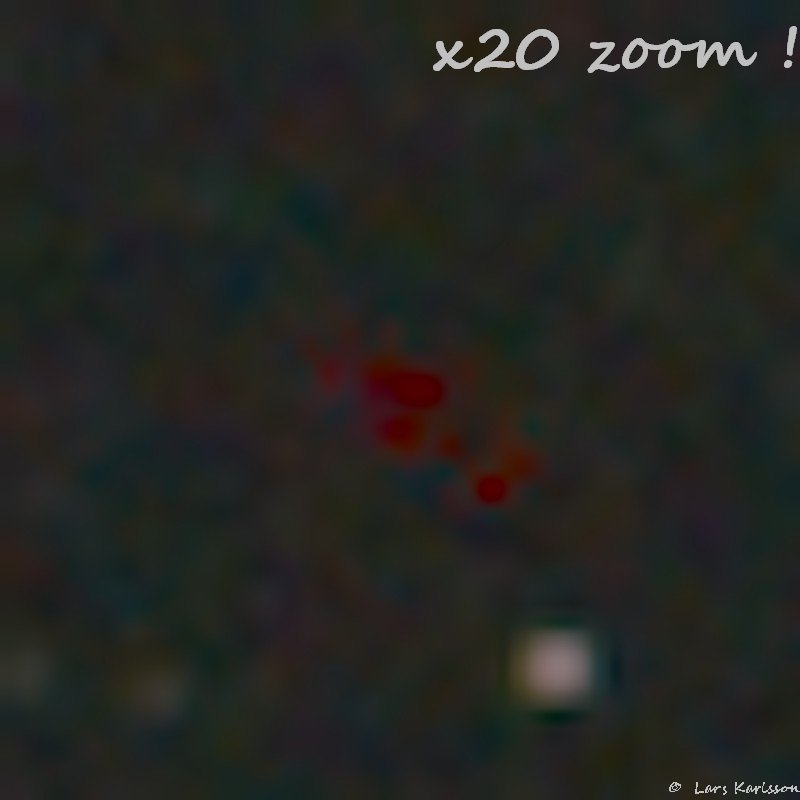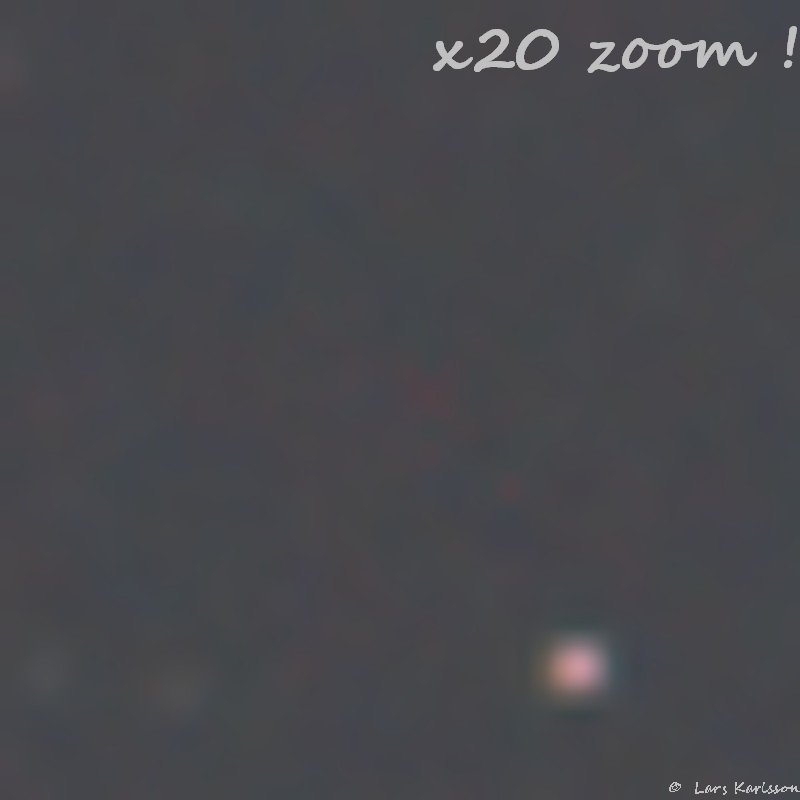|
Advertisement / Annons: |
Tutorial:
|
|
Content:
Page I, Frame |
|
1.1: What is dithering?When you talk about dithering in astronomy it's normally a small movement of the mount between each sub photo you take. What happens then is that when align and stacking the images the images will be shifted a bit to align the stars. But then also any static pattern from the sensor, hot pixels, column defects and alike will be placed in different position relative the stars on each sub image. If the the sub images are just aligned and added the hot pixel will move around by random and look like this. The blurring look comes from it's a color camera and I used deBayer technique and above that zoom factor of x20 that take the sub image from 40x40 pixel to 800x800: 
This image show a defect hot red pixel. It's only one pixel but it has been moving around by the dithering process. Hot pixels are normally cancelled out by dark calibration. But dark calibration is very time consuming, especially if you don't have a temperature regulated cold camera, and your cameras lifetime will be shortened because of all the extra dark sub images you have to take. To my old Canon 5D camera I have 40 GigaBytes of sub dark images. And every time we add or subtract calibration images it adds random noise. Can we use dithering to skip the dark calibration? Yes, if the camera has very low static pattern (this is not noise, noise are random not static), I have read modern Sony cameras are good. I did this test on my own camera, a Canon EOS 6D. If we use a function called Sigma clipping/reject instead of just add the sub images in combination with the dithering function.
It works like this: The result could look like this: 
The hot pixel has almost disappear, it could be better than this if optimizing the parameters for dithering and Sigma clipping. My camera is a color camera and then I have to do a deBayering process before I align the sub images, that will smear out the defect pixels and it cause the Sigma reject function to be less effective. A mono chrome camera had been a better choice. It's important that the dithering move the mount large enough to separate the hot pixels enough. But at the same time, big movements makes the auto guiding more complicated, it take more time after a dithering until the mount stabilize again.
Update:
You can read here how I use it, I have test it on a couple of images (Canon EOS 6D) and it looks to work perfect: Dithering
|
1.2: My equipment and software to do ditheringMy equipment:
Here is a list of what software I use and where you can download them, all of them are free.
This is just what I use, there are a lot of other hardware and software that can do this. You have to be familiar with these software or what other software you use otherwise it will be difficult to follow.
|
|